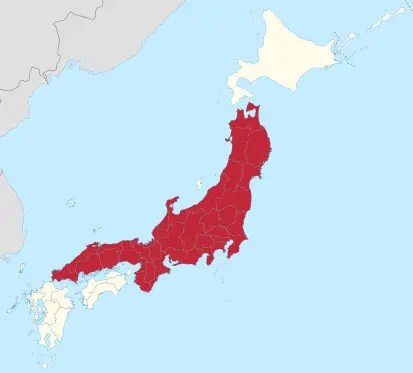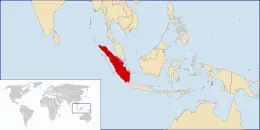
The Seven Largest Islands in the World
|
7. Honshu
 The world’s seventh-largest island encompasses 87,799 square miles of land. It is Japan’s largest island and is often called Main Island or Main Province. The world’s seventh-largest island encompasses 87,799 square miles of land. It is Japan’s largest island and is often called Main Island or Main Province.
Honshu is the world’s second-most populous island (after Java). Many population and economic centers are on Honshu, including Hiroshima, Kobe, Kyoto, Nagoya, Osaka, and Tokyo (the capital).
Mount Fuji, Japan’s highest point, is on Honshu. Mount Fuji rises 12,388 feet above sea level. Also dominating Honshu are the Japanese Alps. The island contains the country’s longest river, Shinano River, which stretches for 228 miles.
Mount Fuji is an active volcano. Japan itself, and Honshu in particular, are in the Pacific Ring of Fire and experience frequent earthquakes. The 2011 Sendai Earthquake sent a tsunami barreling into Honshu. Tokyo bore the brunt of the Great Kanto Earthquake in 1923. |
6. Sumatra
The world’s sixth-largest island encompasses 182,812 square miles of land. Part of the Sunda Islands, Sumatra is the largest island that is entirely in Indonesia. The Indian Ocean surrounds Sumatra, and the Equator runs through the island. The tropical climate is home to a rainforest climate; the once prominent rainforest is not so prominent anymore: just in the last 35 years, the island has lost half of its rainforest, including several species of animals and plants, to deforestation.
 Sumatra and the surrounding areas are part of the Pacific Ring of Fire, an area of intense and regular volcanic activiy. The 2004 Sumatra Earthquake spawned a tsunami that killed hundreds of thousands of people and left many more homeless and destitute. Sumatra and the surrounding areas are part of the Pacific Ring of Fire, an area of intense and regular volcanic activiy. The 2004 Sumatra Earthquake spawned a tsunami that killed hundreds of thousands of people and left many more homeless and destitute.
Sumatra has been inhabited as far as as 13,000 years ago. In ancient times, Sumatra was known as the Island of Gold and the Land of Gold, and the island name probably comes from a combination of the Sanskrit equivalent of those words. Various cultures, among them Buddhism and Islam, influenced the religion and statecraft of Sumatra for centuries. Sriwijaya was the first kingdom rule the entire island; this kingdom also ruled nearby lands for a time. When Marco Polo visited the island in 1292, it was an Islamic state. The Netherlands ruled the island for a time in 17th Century. The Japanese ruled the island during World War II. Sumatra became part of Indonesia in 1950.
The capital and largest city, Medan, has a population of more than 2 million people. Across the island, people speak 52 languages. |
5. Baffin Island
The world’s fifth-largest island encompasses 195,946 square miles of land. The island is within the boundary of Canada’s Nunavut, and contains that province’s capital, Iqaluit. To the south of Baffin Island is Hudson Strait, and to the south of that is Quebec.
 On Baffin Island are the Baffin Mountains, which include Mount Odin, which is 7,031 feet tall. In the middle of Baffin Island is the Barnes Ice Cap. Most of the island lies north of the Arctic Circle, and annual average temperatures are at 15 degrees Fahrenheit. On Baffin Island are the Baffin Mountains, which include Mount Odin, which is 7,031 feet tall. In the middle of Baffin Island is the Barnes Ice Cap. Most of the island lies north of the Arctic Circle, and annual average temperatures are at 15 degrees Fahrenheit.
Inuit people have lived on Baffin Island for thousands of years. Evidence of European exploration has been dated to about A.D. 1000.
Baffin island was named after English explorer William Baffin, who arrived in the area in the early 17th Century on a search for the Northwest Passage. Two other well-known English explorers, Martin Frobisher and John Davis, had been through a few decades before. Iqaluit, Nunavut’s capital, lies on Frobisher Bay.
The island is home to a mix of populations. The human total runs to about 11,000. Also commonly seen on the island are caribou, foxes, harp seals, polar bears, walruses, whales, and many species of water birds.
Today’s inhabitants speak mainly Inuktitut but also a bit of English and French. |
Numbers 4–2 |
Social Studies for Kids
copyright 2002–2016
David White |